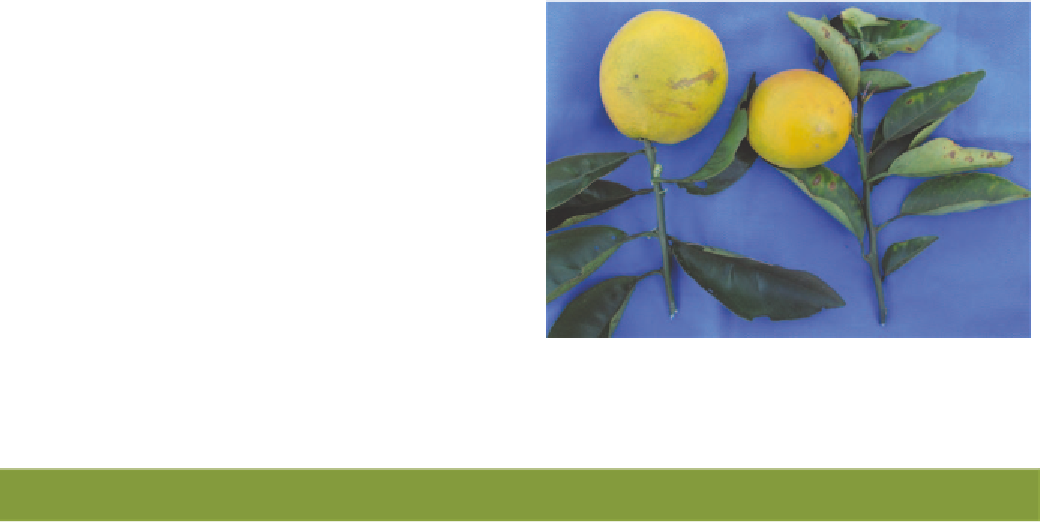Agriculture Reference
In-Depth Information
Importance
Citrus canker is a biosecurity threat, and regarded by
the Australian citrus industry as a very destructive,
economically devastating disease. Citrus canker is
thought to have originated in south-east Asia and has
been reported in some parts of Asia, the Pacific Islands,
the Torres Strait, Africa, North America, South America,
India and the Middle East. Eradication of past citrus
canker outbreaks in Australia have cost growers and
governments hundreds of millions of dollars and
resulted in destruction of large areas of host trees.
What to do if you suspect citrus canker
This pathogen is a biosecurity risk to Australia. If citrus
canker is suspected, contact the nearest Department of
Primary Industries or the Plant Health Australia hotline
(1800 084 881).
CITRUS VARIEGATED CHLOROSIS - BIOSECURITY THREAT
Refer to the chapter on Common diseases of perennial
fruit crops.
What to do if you suspect citrus variegated
chlorosis
This pathogen is a biosecurity risk to Australia. If citrus
canker is suspected, contact the nearest Department of
Primary Industries or the Plant Health Australia hotline
(1800 084 881).
Fig 6.4 Symptoms of citrus variegated chlorosis on leaves and
fruit. Note the reduced fruit size, chlorotic variegations and scorch
symptoms (right) compared with healthy leaves and fruit (left).
HUANGLONGBING/CITRUS GREENING - BIOSECURITY THREAT
Cause
Phloem-limited fastidious bacteria
Candidatus
Liberibacter asiaticus
, Ca
. L. africanus, and
Ca
.
L. americanus.
The first sign of huanglongbing is often the production
of a single chlorotic (yellow) shoot that contrasts
against an otherwise healthy, green canopy. Infected
leaves can show chlorotic mottling, often referred to
as 'blotchy mottle', which is considered more indicative
of huanglongbing when the mottling is asymmetric
about the midrib. Veins can become yellow, swollen
and/or corky.
Symptoms
This disease is commonly referred to as
'huanglongbing' (translates to 'yellow shoot') or
'greening'. Other names include 'vein phloem
degeneration', 'leaf mottle', or 'dieback', which all
relate to the symptoms of the disease. Symptoms of
huanglongbing closely resemble those of nutrient
deficiency, making this disease difficult to diagnose
early in an outbreak, especially in unthrifty or
nutrient-deficient trees.
Depending on the duration of infection or host age when
infected, disease symptoms can be uniform throughout
the canopy, send a tree into decline within 12 months,
and prevent fruit set. Leaves on trees with these
advanced symptoms also tend to be smaller and more
upright than those of healthy trees, and are yellow with
nutrient deficiency symptoms.













